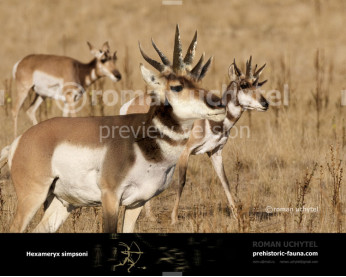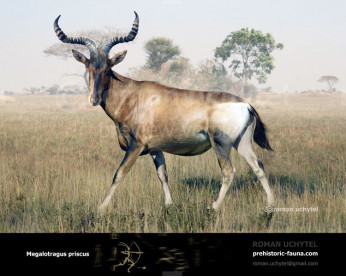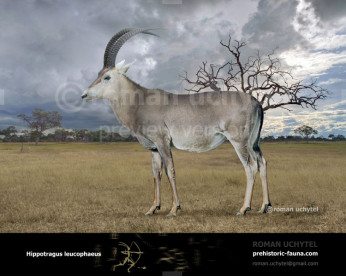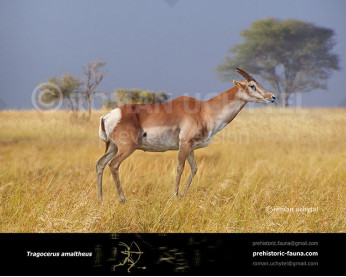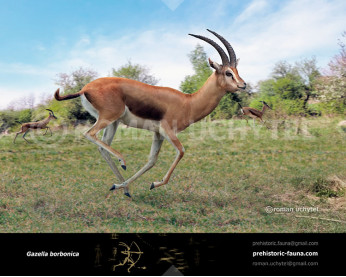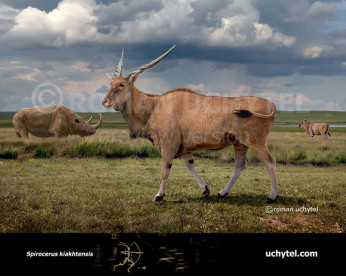Rusingoryx atopocranion
403403Rusingoryx (Rusingoryx atopocranion (Pickford & Thomas, 1984))
Order: Artiodactyla
Family: Bovidae
Subfamily: Alcelaphinae
Dimensions:height - 120 - 150 сm, weight - 130-250 kg
Temporal range: during Pleistocene of Africa (Kenya)
A typical representative: Rusingoryx atopocranion
Rusingoryx is a poorly known extinct alcelaphine bovid, that lived on the plains of Kenya (Rusinga Island) during the Pleistocene. It contains only one species - R. atopocranio.
Rusingoryx is known for its strange pointed nose with a large nasal dome. It’s height was 120-150 cm and weight - 130-250 kg.
The first specimens were described in 1983, having been taken from a site called Bovid Hill on Rusinga Island in Lake Victoria. Butchered bones found in 2011 with stone tools suggested that they had been killed by humans.
Rusingoryx (Rusingoryx atopocranion (Pickford & Thomas, 1984))
Order: Artiodactyla
Family: Bovidae
Subfamily: Alcelaphinae
Dimensions:height - 120 - 150 сm, weight - 130-250 kg
Temporal range: during Pleistocene of Africa (Kenya)
A typical representative: Rusingoryx atopocranion
Rusingoryx is a poorly known extinct alcelaphine bovid, that lived on the plains of Kenya (Rusinga Island) during the Pleistocene. It contains only one species - R. atopocranio.
Rusingoryx is known for its strange pointed nose with a large nasal dome. It’s height was 120-150 cm and weight - 130-250 kg.
The first specimens were described in 1983, having been taken from a site called Bovid Hill on Rusinga Island in Lake Victoria. Butchered bones found in 2011 with stone tools suggested that they had been killed by humans.

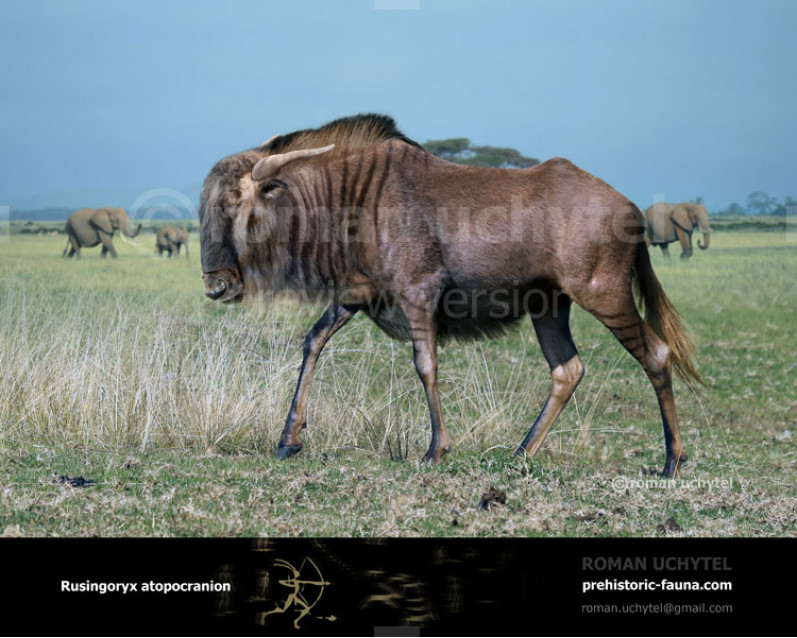
-797x638.jpg)
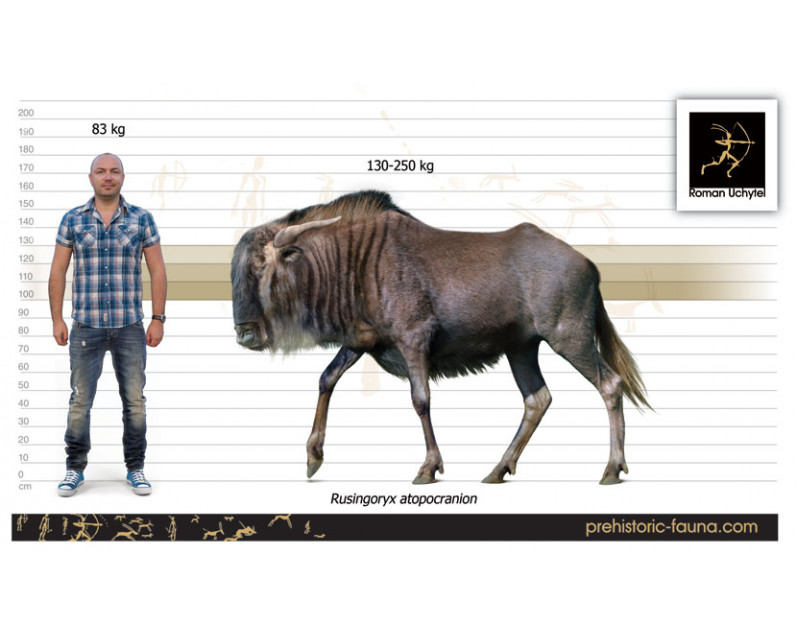

-70x56.jpg)

